The things that empower us can sometimes be dangerous. To improve their physical life and break the monotonous life cycle, individuals have learned to do sports, and we’re all aware that sports are dangerous.
Ask someone who has been doing sports for some time, and almost anyone has a story on how they got hurt. Sometimes these injuries are life-threatening. Take a look at the world’s 30 most dangerous sports.
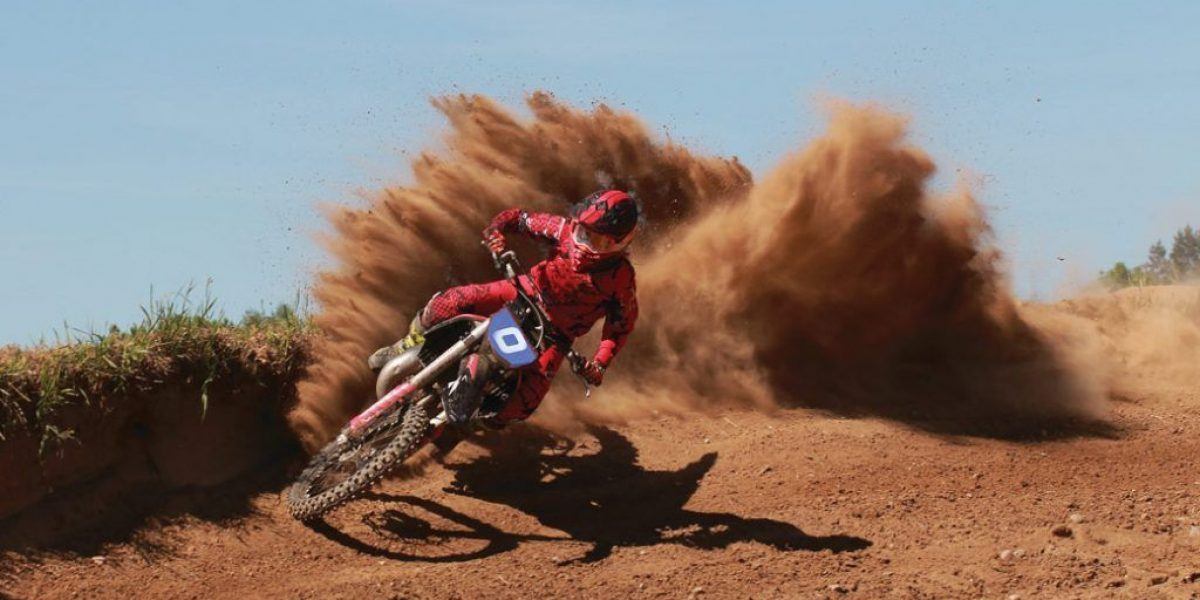
30. Hockey
While hockey might seem like a fun sport to watch and play casually, there are several dangerous situations where hockey can cause serious injuries. Hockey is played with tough wooden sticks and a hardball, making it a dangerous sport and putting it on this list.

The injuries involved in this sport can range from head trauma and concussions to broken bones in almost every part of the body. It is difficult to keep track of the hooked sticks at all times, making it an injury-prone sport.
29. Cliff Diving
Cliff diving is similar to bungee jumping or skydiving, but with one very important distinction: There is no rope or parachute to save you. Cliff divers dive off high cliffs into the plunging depths of the water below them.

The dangers of cliff diving are that you never know what awaits you at the bottom of the water. If someone crashes into the shallow end of a water body, it can mean almost certain death.
28. Jousting
While jousting was a competitive sport in the medieval ages, and its point was to kill the other rider, it has become a more sophisticated sport. However, this sport is not without its dangers.

In jousting, two riders on horseback gallop towards each other from opposite ends and try to make the other person fall off their horse or break their shields with the help of wooden lances. Falling off horses at high speed is just one danger of the sport, as you also run the risk of getting trampled by your own horse.
27. White Water Rafting
Imagine rough waves and tricky rocks in a river, and your only defense against these is an inflated raft, your lifejackets, and your paddles. This is what white water rafting is about.
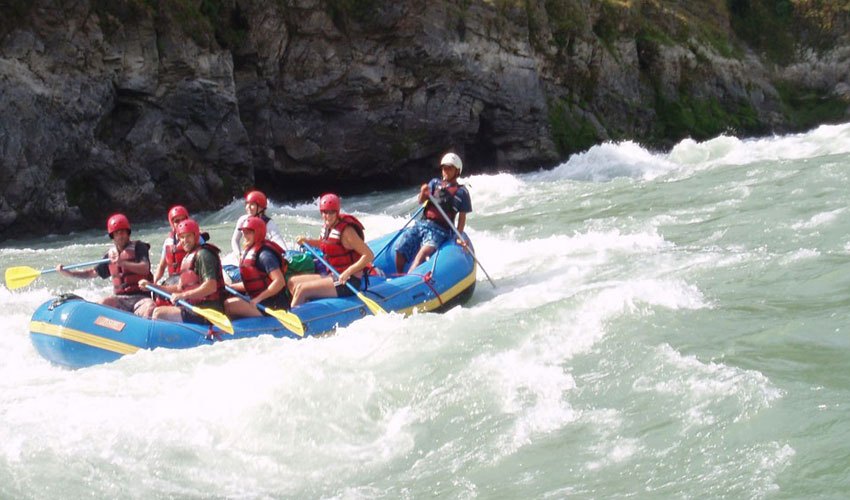
The perils of this sport are pretty obvious. There is a high chance that players of this sport can suffer impact trauma on pointed rocks all over the circuit or run the risk of drowning due to fast currents if they fall off the raft.
26. The Volvo Ocean Race
Covering 39,000 miles in a period of nine months, the Volvo Ocean Race is the longest ocean race in the world. This means using sailing equipment to travel throughout the world.

The time aspect of it is not the only dangerous thing for this sport, as the players also have to endure rough seas at regular intervals. They also have to pass through extremely low temperatures, making this one of the most dangerous long-term sports played today.
25. Pole Vaulting
In a pole vaulting game, a player runs towards a high beam, uses a pole to vault themselves into the air, and tries to pass the beam without touching it. While there is a cushioned layer on the landing pad, the game does not come with its share of danger.
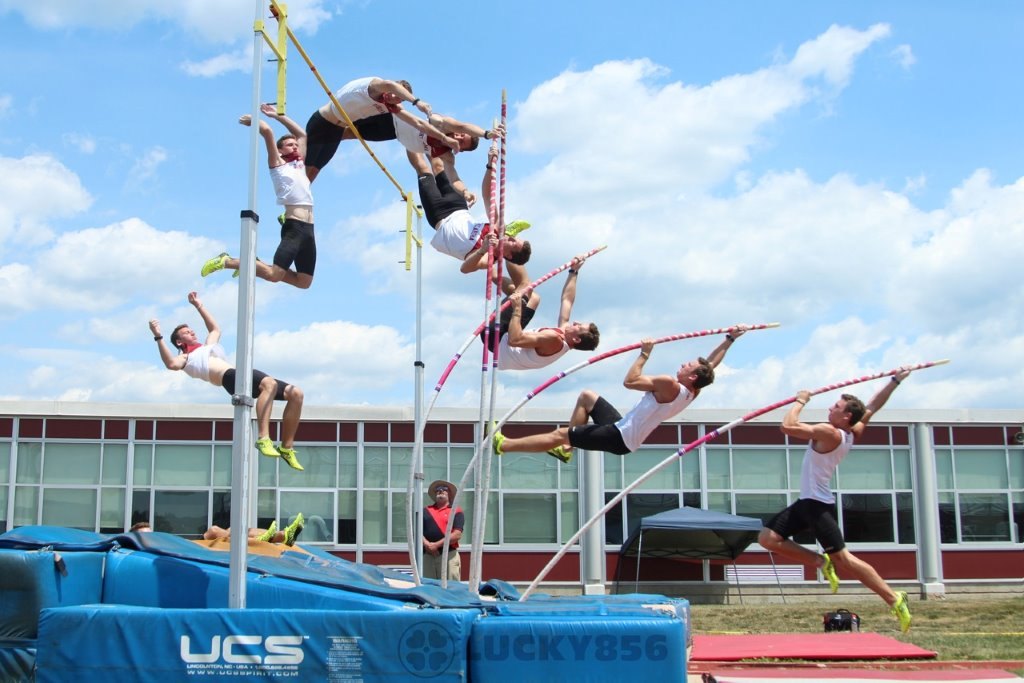
There is always a danger of landing wrong, which can cause broken bones and other impact injuries. Only well-trained and the most skilled players know how to vault themselves properly and land appropriately on the other side.
24. Swimming
When you think of swimming, you think of taking a casual dip in your local or personal pool. However, this sport has many dangers associated with it.

Drowning is always a key element when it comes to the dangers of any water-based sport. Besides this, competitive swimmers are also at risk of strain and fatigue of swimming. While not causing many deaths, swimming does account for a large number of injuries throughout the world every year.
23. Le Mans
Le Mans is a car racing tournament held in France every year. This tournament has accounted for 130 deaths so far.

The race itself is 24 hours long. This accounts for the fatigue faced by players, along with lack of sleep and the perpetual dangers of crashing when they’ve been driving for hours on end.
22. Baja Racing
Baja is a race similar to Le Mans, except that it takes place on sand dunes and not on tarmac. Dune buggies and motorcycles are used in this sport, and it is very similar to Motocross, except with a time factor involved.
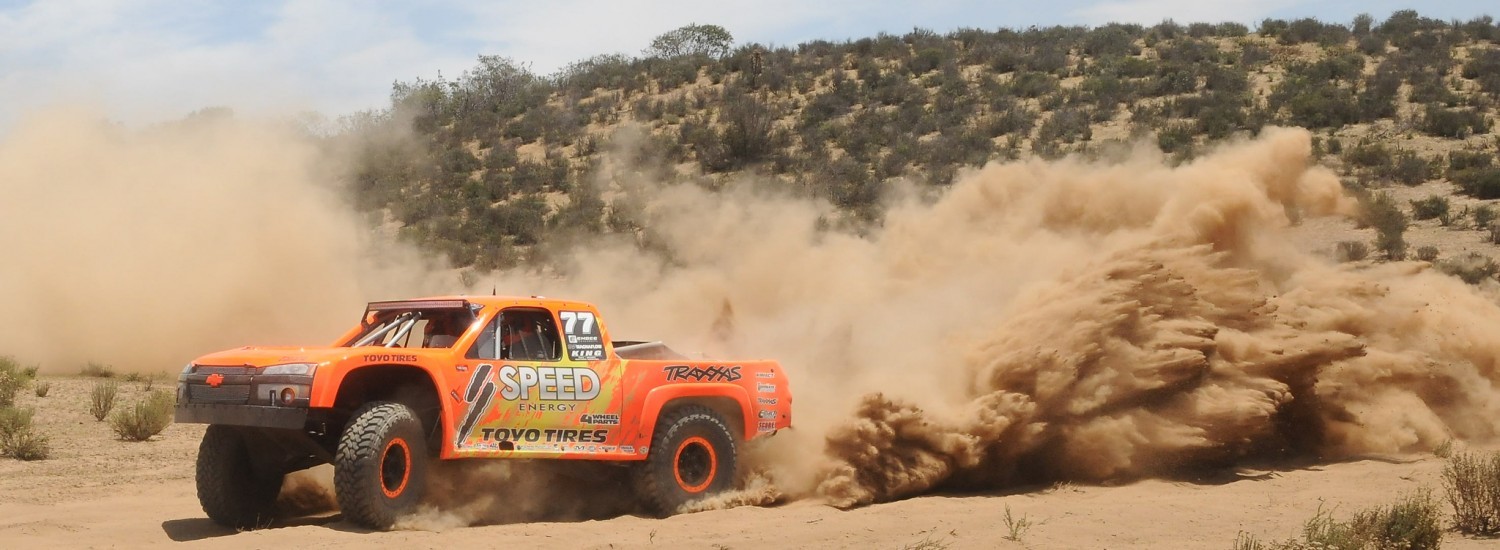
With 24 hours to travel the most distance, the tough track involved in Baja racing has caused several deaths due to the constant shaking of the players involved. Like always, crashes contribute a lot to the number of injuries in the sport.
21. Baseball
If you’ve ever watched a baseball match on TV or live, you can see the amount of exertion that goes into it. The speed of the balls and the players trying to get to their base contribute more to the injuries.

Broken bones are just a part of the injuries caused, as long-term pitchers also suffer from other serious issues. Shoulders, joints, and tendons are routinely injured as part of the game.
20. Grand Prix
The Grand Prix is a part of F1 racing that is one of the most coveted races worldwide. As is with any car-related event, speed is the main killer in this event.

While speeding at hundreds of miles per hour in cars specifically meant to go as fast as possible, crashes are bound to happen. Several drivers have been injured while just warming up, and conditions like rain or wet tracks don’t help.
19. Iditarod
Iditarod is a race that is carried out by huskies and sleds. It is carried out in the frozen parts of Alaska, which means that the sub-zero temperatures are a major contributing factor to the injuries and deaths caused by this event.

Compared to the number of human deaths, dogs’ death toll during this event is much higher. Apart from crashes, human injuries include frostbite and broken bones.
18. Helicopter Skiing
If you have never heard of this sport before, it is exactly what it sounds like. A helicopter is used to ski up and down mountains, using a rope that is hung down from it.

It is pretty evident that this can be a dangerous sport just based on its description. The speed of the helicopter, the uncertain terrains, and the cold temperatures all come together to put this sport on the list.
17. Basketball
While basketball might not seem like such a dangerous sport, you would be surprised if you looked up the kind of injuries sustained by professional NBA players in just the last few seasons. Broken bones barely begin to scratch the surface.

Teeth and noses are broken quite a few times during basketball games. Besides this, knee and ankle breaks are fairly common. Injuries like ligament and tendon tears are even more frequent in this sport.
16. Cave Diving
There are thousands of underwater caves in all parts of the world. These caves are caused by natural phenomena like underwater volcanoes and similar causes.

In cave diving, divers dive down these caves without knowing anything about them. It is dark, the conditions are unsafe, and the way these divers get there is by jumping off a helicopter and parachuting down to the cave, which adds its own element of danger.
15. Downhill Biking
Downhill Biking is an exciting sport where players drive a sports bicycle down a mountain slope. This can be extremely dangerous.

Firstly, they do not have the whole mountain memorized, so they have to rely on their decision-making and quick muscle reflexes to navigate everything properly. Crashes are common, and broken bones and similar injuries are widely prevalent in the sport.
14. Longboarding
A longboard is like a skateboard, but longer. Longboarders usually race on open roads that often have a bit of a slope, which means that any accident that can happen on the road can happen to these players.

Apart from vehicular crashes, only experienced longboarders can properly navigate every situation that happens on the road. This means that the high speeds along with the tarmac can cause serious injuries and even death.
13. Snowboarding
While skiing is also a dangerous sport, snowboarding comes with more causes resulting in an injury. Snowboarding is a combination of surfing and skiing, except that it is done on snow instead of water.

The harsh temperatures of the winter expanse in which this sport is carried out can cause temperature-related injuries like frostbite even after wearing protective equipment. Besides this, crashes are common, and vegetative collisions can cause broken bones, brain injuries, and other fatal accidents.
12. Base Diving
Base diving involves using a parachute and a wingsuit to jump off a very height, gliding to an open area, and opening your parachute to land safely. Obviously, this comes with a lot of things that could go wrong.
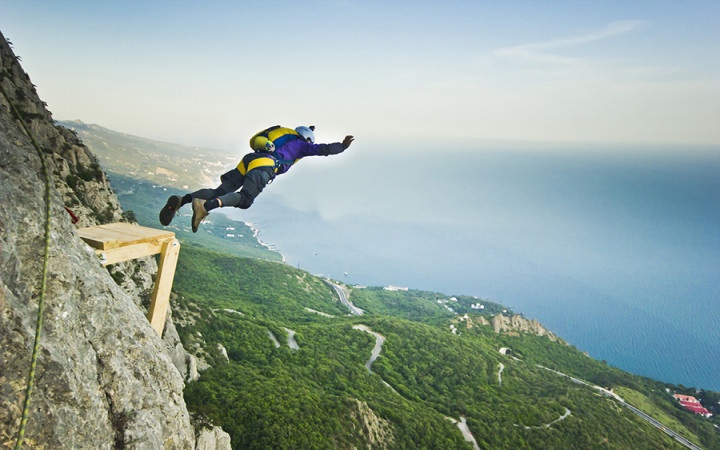
First and foremost, if your parachute does not open, you are headed towards certain death. Besides this, you need to be skilled in using a wingsuit, as it can steer you in the completely wrong direction where you might not be able to use your parachute safely, causing gravity to claim you.
11. Scuba Diving
While scuba diving has been made a lot safer due to the advancement of technology and better gear, it is still a dangerous sport to undertake. As with any water-related sport, drowning is always a risk during this sport.

Besides this, marine life can be a contributing factor, as sharks have attacked several scuba divers. If your equipment malfunctions, you have no way to breathe. On top of everything, if you resurface too quickly, the difference in pressure can cause a situation called Bends.
10. Cheerleading
So much more than yelling encouraging messages from the sidelines, cheerleading has changed. In addition to dance and stunts, modern-day cheerleading incorporates impressive feats of gymnastics and flexibility.

If everything goes right, a basket toss can send a cheerleader flying 20 feet in the air, only to land in the arms of her teammates. It is not difficult to see how dangerous cheerleading can be. Some might not even deem cheerleading a real sport, even with human pyramids, choreographed gymnastic passes, and more.
Cheerleading injuries, however, are often much more intense, accounting for 50-66 percent of female athletes’ devastating injuries. All regions of the body are affected by cheerleading injuries. The most generally injured are the head, wrists, shoulders, ankles, and neck. More than half of all cheerleading injuries involve sprains, concussions, and back injuries.
9. Rugby
The Rugby Union, usually termed rugby, is a full-contact team sport that emerged in the first half of the 19th century in England. It is based on running with the ball in hand, one of the two codes of rugby football.

The game is played on a rectangular field with H-shaped goalposts at both ends of the field. Two teams of 15 players attempt to carry an oval-shaped ball behind the line of the opposing team. There will undoubtedly be maddening injuries with 15 burly players on either side battling against each other for 80 minutes.
With a mouthguard and spiked boots being the only defense, players have to bring the ball down the field. To play the game, rugby players need their whole bodies, contributing to the notorious use of shoulder barging, body checking, and lifting tackle. These plays lead to players’ injuries, such as concussions, torn ligaments, dislocated shoulders, or even tetraplegia.
8. Big Wave Surfing
Big wave surfing is a surfing sport in which surfing practitioners paddle on surfboards known as “guns” or towboards and are towed on waves of at least 20 feet in height.

A breaking wave can force surfers down 20 to 50 feet (6.2 m to 15.5 m) below the surface in a big wave wipeout. They have to quickly recover their balance once they stop spinning around and find out which way is up. Before the next wave strikes them, surfers may have less than 20 seconds to get to the surface.
Additionally, the water pressure can be powerful enough to break one’s eardrums at a depth of 20 to 50 feet. At those depths, intense currents and water can also smash a surfer into a reef or the ocean floor, leading to serious injury or even death.
7. Street Luge
Street luge is an intense activity powered by gravity that includes riding down a paved road or course with a street luge board (also often referred to as a sled). The lawfulness of this dangerous activity is a questionable topic.
Except for the fact that the rider is in a lying position on the luge board or sled when he jumps down a paved road or course at incredibly high speed, it is a bit like skateboarding. Participants are expected to wear protective leathers and helmets, or they will raise the chances of being crushed by cars that will most probably not notice the riders going higher.
There is a high risk of a road crash, short of which only the feet act as brakes. The majority of accidents occur when people fall off a sled.
6. Equestrian
You might be shocked, but it is risky to do any horse riding. There is no way around that it is hazardous to get on the back of an unpredictable moving living creature that weighs eight times more than you.

It is challenging to predict a fall or a slight stutter from a horse, no matter how much padding and protection you might be wearing. Obviously, the different activities in equestrian disciplines will escalate and lead to various injuries.
With the higher and more challenging jumps over the dressage, showjumping seems like a sport holding lots of danger in store.
5. Motocross
Motocross is the direct counterpart to road racing, but a range of bikes on a closed-circuit ride off-road. Motocross circuits are designed on a range of non-tarmac surfaces, like gravel, sand, mud, grass, etc., which appear to integrate natural or artificial shifts in elevation.

Motocross is a particularly complex sport. To handle your bike at high speeds on rough, rocky, and slippery ground, riders need to be too fit.
There are prevalent ACL fractures and ankle sprains, with collisions and flying debris, two of the most common issues you have to contend with on the bike.
4. Mountain Climbing
It is not too difficult to understand that climbing mountains generally includes the dangerous act of climbing the highest natural rocks, that is, mountains, up and down, and every part of this endeavor is unpredictable.
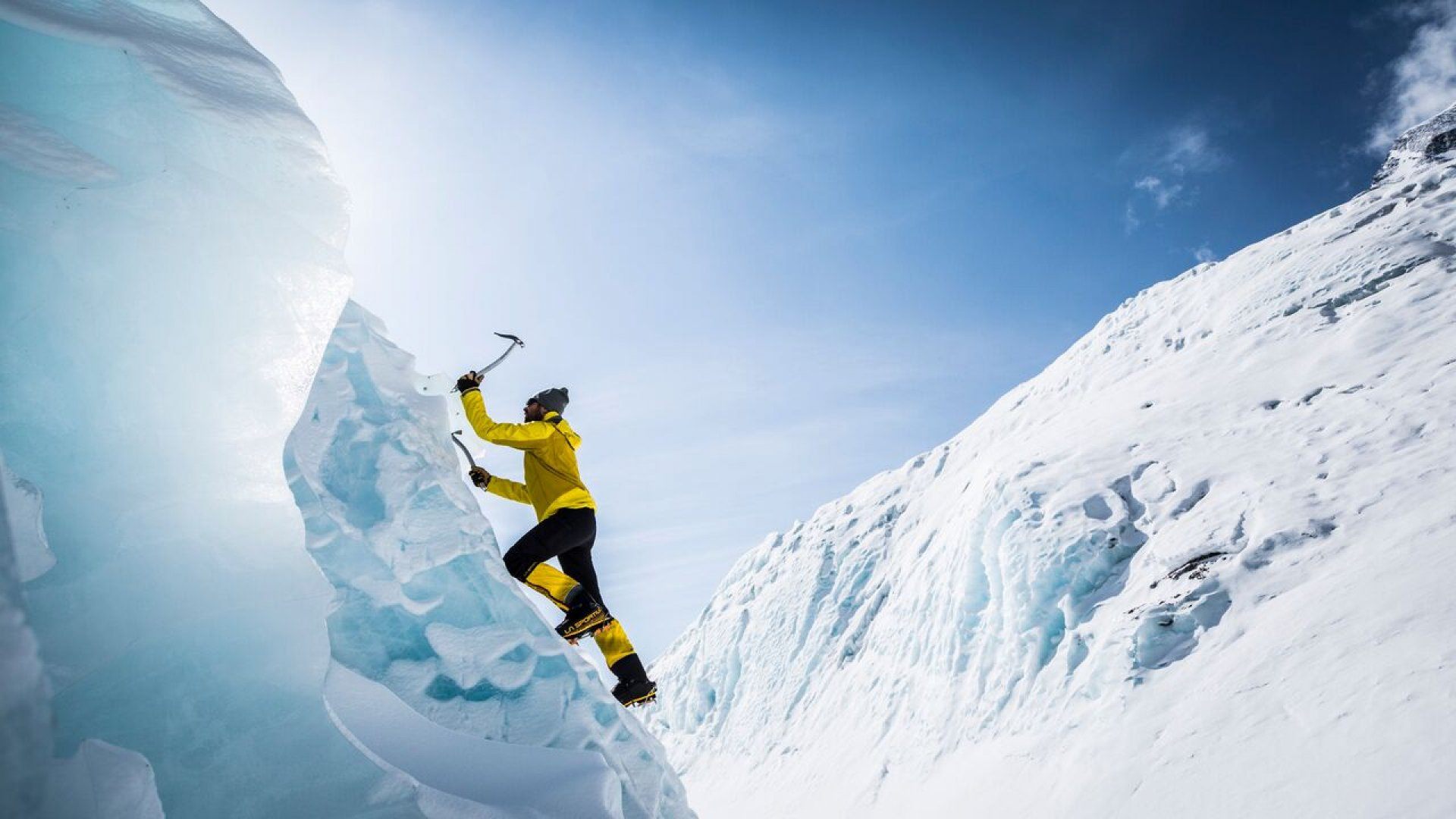
Climbing mountains embraces the exhilaration created in a scenario of associated danger by challenging one’s bravery, adaptability, agility, power, skill, and endurance to the fullest. Mountaineering is a group activity to a larger extent than most sports, with each participant supporting and promoting the group’s achievement at every level.
During heavy physical activities or falls, the climber may suffer multiple physical injuries, such as twisted ankles, torn ligaments, broken bones, sprained muscles, back injury, or frostbite. Changes in the weather can be deadly, one can easily lose track, and fatalities are common.
3. Bull Riding
This is a rodeo sport where a rider tries to remain mounted on the bull for as long as possible while the bull attempts to buck off the rider. The mere mention of mounting a 1000kg bull incites wobbles in all of us, so I don’t think anything needs to be said about the dangers involved in the actual sport.

The rider must remain on top of the bull for eight seconds to earn a score, with the use of one hand clenched on a bull rope tied behind the forelegs of the bull. Failing to hit the eight-second mark results in a no-score ride. Up to four judges may judge the rider, and four judges, the bull for its performance, varying on the bull riding association and the contest.
A perfect score is 100 points for most groups. In general, from the mid-70s to the high 80s, most experienced riders score in the neighborhood. With an injury to the neck, head, face, and concussions, this is deemed one of the most violent sports globally, contributing to most injuries.
2. Boxing
Boxing is a fighting sport where two individuals throw a punch at each other for a fixed amount of time in a boxing ring, usually wearing protective gloves and other protective equipment, like hand wraps and mouthguards.

It doesn’t shock that this is not an injury-free sport, a contact sport where the only goal of the player is to punch his opponent. Statistics indicate that over the course of their career, 90 percent of boxers suffer a brain injury.
Later in their lives, they may also be susceptible to illnesses like Parkinson’s or Alzheimer’s. Bruising to the face, hands, and ribs, cutting (lacerations), shoulder dislocation, boxer fractures, carpal bossing, and concussion are the most common boxing injuries.
1. Mixed Martial Arts
A full-contact and brutal pursuit are mixed martial arts (MMA). It is very dangerous— any sport where the primary objective is to beat the opponent into submission or knock them out is. Often it can be bloody, and both in training and during fights, fighters endure injuries.

Individuals who get into MMA are expected to practice by fighting, and you’re not compensated for training. Before they even start, when they get hurt or can’t bear the impact on their bodies, some people don’t know what they’re getting into, and their careers are ended.
Men like Brock Lesnar and Tito Ortiz have made MMA more popular, but when it gets to it, the definition of a bloodsport is MMA, the nearest approximation we have to the ancient Romans and Greeks’ old death fights.
Conclusion
It’s difficult to put up with an accurate list of the most dangerous sports globally with bits of statistical information scattered all over the internet and no archive to consolidate everything for a long stretch of time.
Sport can be dangerous in the water, air, or field, wherever athletes want to display their athleticism. Competition in various forms of sports is often followed by a risk of injury, even though you are not directly facing your competitors.







